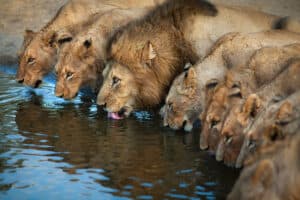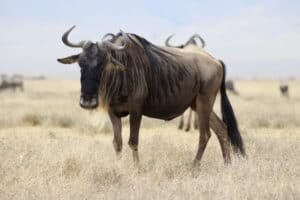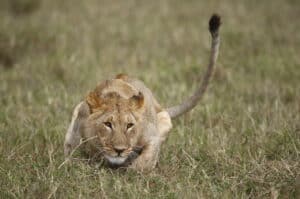Continue reading for our analysis...
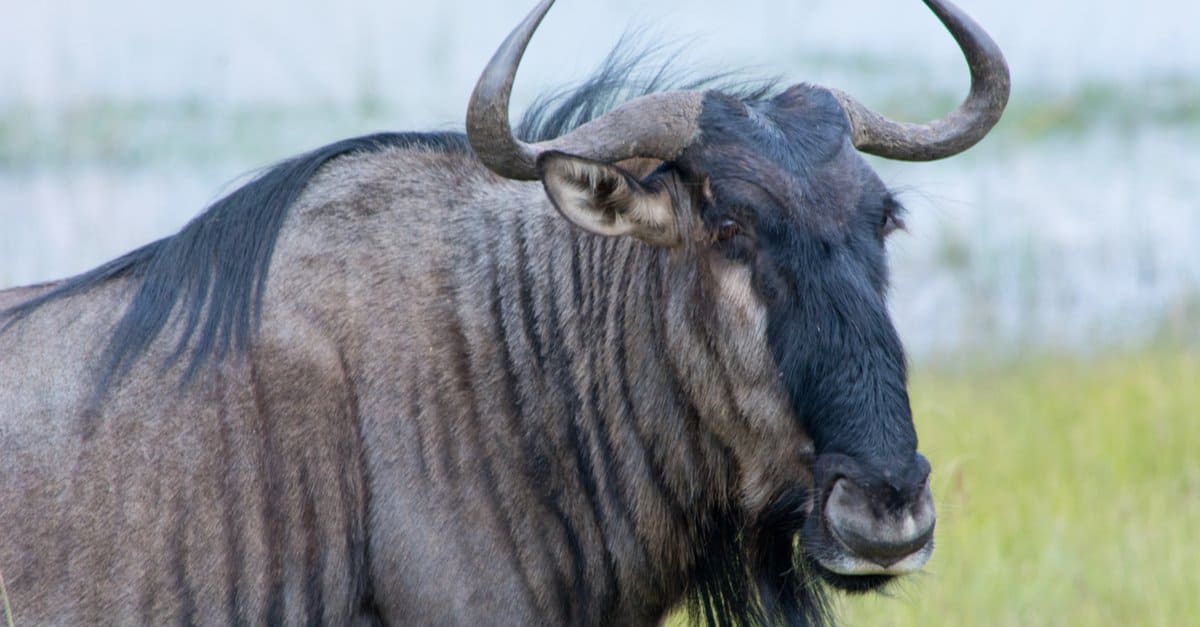
Have you seen this footage of a wildebeest escaping lions? It’s an incredible sight to behold!
The wildebeest, also known as gnu, are large antelope that can weigh up to 600 pounds and reach 8 feet tall. Their name originates from Dutch settlers in South Africa; it means “wild beast.” Follow along as we explore an exciting video that shows what makes these beasts so wild!
What happens when a wildebeest dropkicks a lion? Read on to find out!
Wildebeest: The Brave Survivor
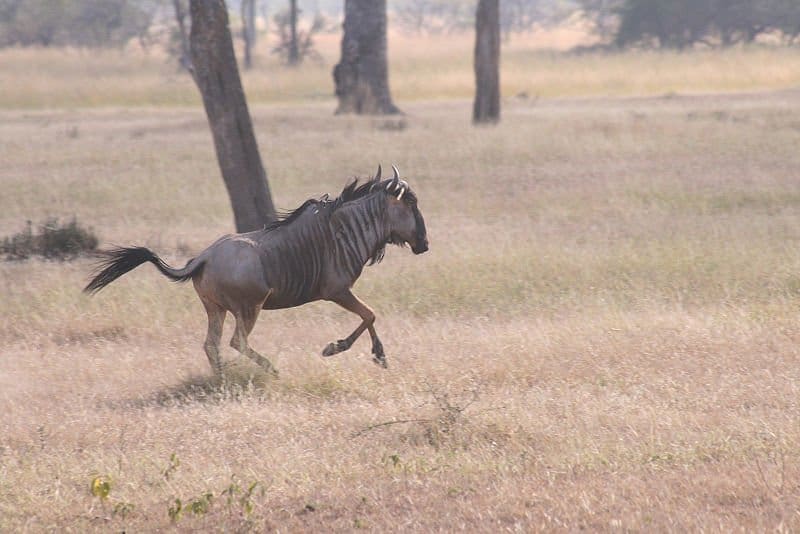
A wildebeest’s speed and agility are impressive.
©Muhammad Mahdi Karim, GFDL <http://www.gnu.org/copyleft/fdl.html>, via Wikimedia Commons – License
This amazing video shows a wildebeest making a daring run for its life. A pride of lions is ready to make the beast into lunch, but they’ll have to catch up first!
Wildebeest have impressive speed and agility, which help them to evade predators. And lions are the primary predators of these animals. They’re usually successful at making the kill, but this wildebeest is extra fierce and determined to get away!
A few of the lionesses in the video attempt to pounce on the wildebeest but fail miserably! The wildebeest leaps high into the air, the tips of its hooves scraping the hungry lion’s mouth.
The leap over the lions is insane to see! Thankfully, the video does a great slow-motion replay.
You would think that leaping would slow a 600-pound animal down. But not if you’re this wildebeest! It doesn’t miss a step. After landing on its feet, the agile beast resumes super speed and heads straight for the watering hole.
Wildebeests can run up to 50 mph, comparable to a lion’s speed. And moving around is what they do best. These animals spend most of their lives on the go!
After only 10 minutes after birth, calves can already start running. The majority of wildebeest born arrive within the same 2- to 3-week calving season. And for millennia, wildebeests have constantly been migrating along a 500-mile loop in search of food and shelter.
Here are some more fun facts about these amazing animals:
- Wildebeests migrate in herds of up to one million animals!
- A group of wildebeest is called a “confusion.”
- They can run 50 mph for short distances.
Another fun fact about wildebeest is that they are very social animals. They often formed large herds and grazed to protect themselves from predators. However, it doesn’t always work, as you’ll see in the video!
The Cunning Lionesses
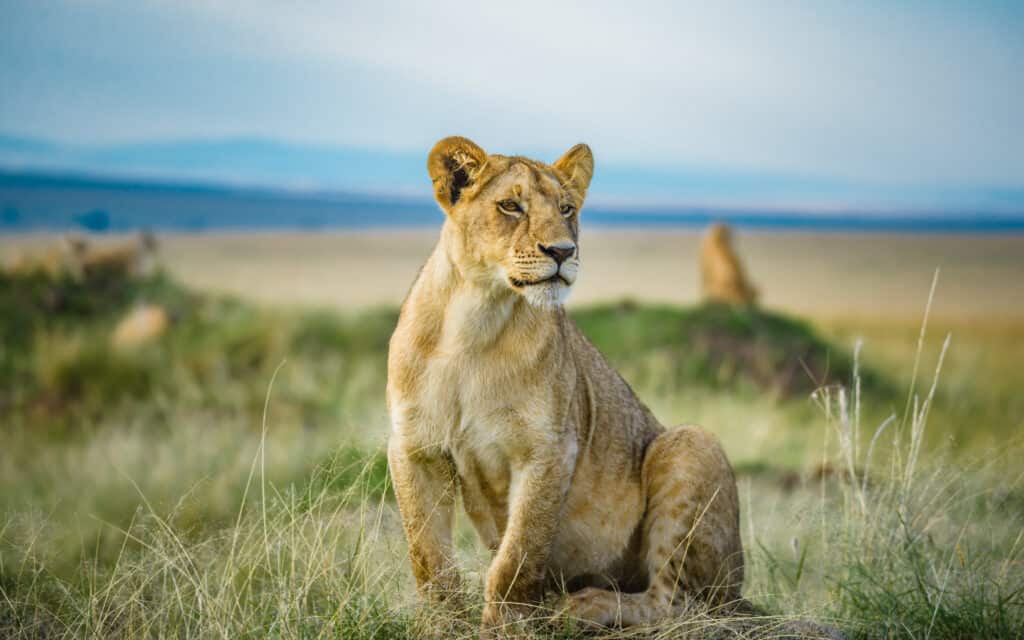
Lions typically hunt at night but emerge on cooler days occasionally.
©Yogiee/Shutterstock.com
This incredible wildlife footage happens during the day. That means it’s probably taking place on a cooler day.
Lions usually hunt at night. But on cooler days, these majestic beasts can be seen prowling around the waterholes in search of their prey. Zebras, rhinos, hippos, giraffes, and crocodiles are just some animals that can become a part of a lion’s meal.
This footage captures the action somewhere in the middle of things. The lions have already given away their positions. Lions are masterful hunters who stay hidden in grassy areas until their unsuspecting target gets close enough for them to attack.
The video shows six lionesses out in the open, representing a group known as a pride. This pride can contain up to fifteen members, and the lionesses are usually the main hunters.
Witness the Incredible Power of Nature: Wildebeest’s Daring Escape
This incredible footage shows the wildebeest’s impressive agility and stamina, as well as the lions’ cunning. It’s the perfect video to watch if you need a reminder of the incredible power of nature. Make sure you watch it; you won’t regret it!
Who knows, you may even gain a newfound appreciation for wildebeests!
How Likely Is a Wildebeest to Get the Better of a Lion?
It depends on a number of factors. Such as speed, for starters. Both lions and wildebeest are capable of reaching a maximum speed of 80 mph. However, the wildebeest is capable of maintaining it for longer compared to the apex predator.
And in spite of their rather laid-back demeanor, wildebeests are actually pretty powerful. They are also capable of weighing as much as lions, if not more (male wildebeests weigh between 400 – 550 lbs, while male lions weigh between 330 – 550 lbs) and outweighing lionesses (which weigh between 265 – 395 lbs).
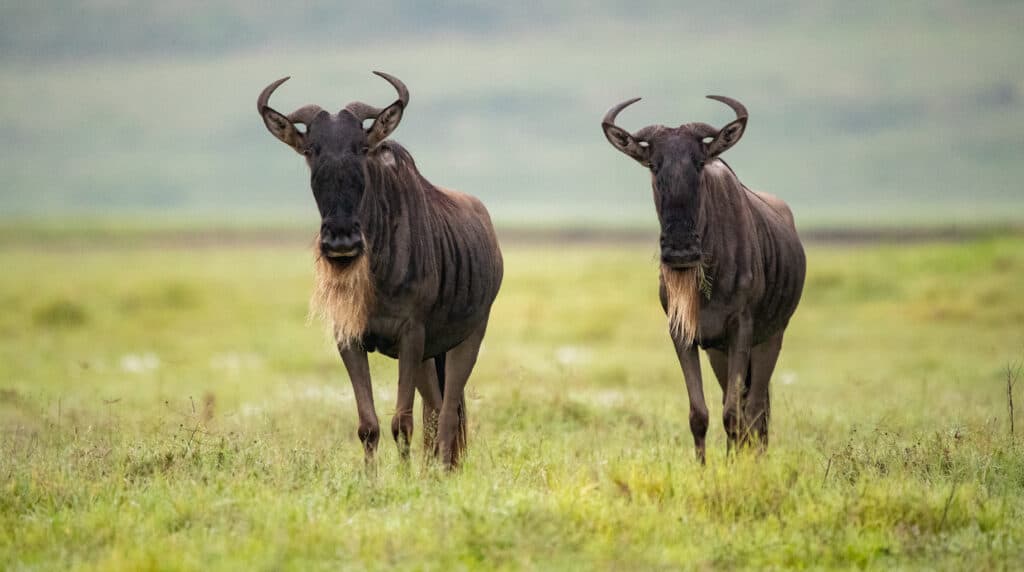
A male wildebeest can weigh up to 550 pounds, which is comparable to a male lion.
©iStock.com/Scott Canning
And while weight might not account for much against a hungry pride of cunning lionesses or a ravenous lion, wildebeest also come with muscles that have an efficiency of 62.6% and impressive athleticism, as seen by the ease with which the wildebeest in the video sprang over the heads of its feline hunters.
There are also those horns that can deal serious damage to lions and leopards alike.
As a matter of fact, there has been an instance of one wildebeest actually managing to fight off two lionesses and tossing one with its horns.
The Normal Diet of Lions
Lions are carnivorous animals and typically feed on large prey, such as wildebeest, antelopes, zebras, and buffalo. They also feed on smaller animals like rodents, birds, and reptiles. Lions have the ability to take down large animals, and it is not uncommon for them to hunt and kill a wildebeest.
Lions are typically group hunters and will stalk their prey, using their acute senses of smell and hearing to locate their target. Once they have found their prey, they use their speed and strength to take down their target, often using the element of surprise. Lions usually hunt during the night or during the early morning, when their prey is less alert and easier to catch.
Once the prey is caught, lions will usually begin to eat immediately. They will first consume the blood and organs of the animal and then move on to the muscle and fat. Lions will typically eat until they are full, but it is not uncommon for them to take some of the food back to their den or bury it for later.
To supplement their diet, lions will also feed on carrion, which is the remains of dead animals. This is not a favorite part of their diet, but it helps to sustain them during times of scarcity.
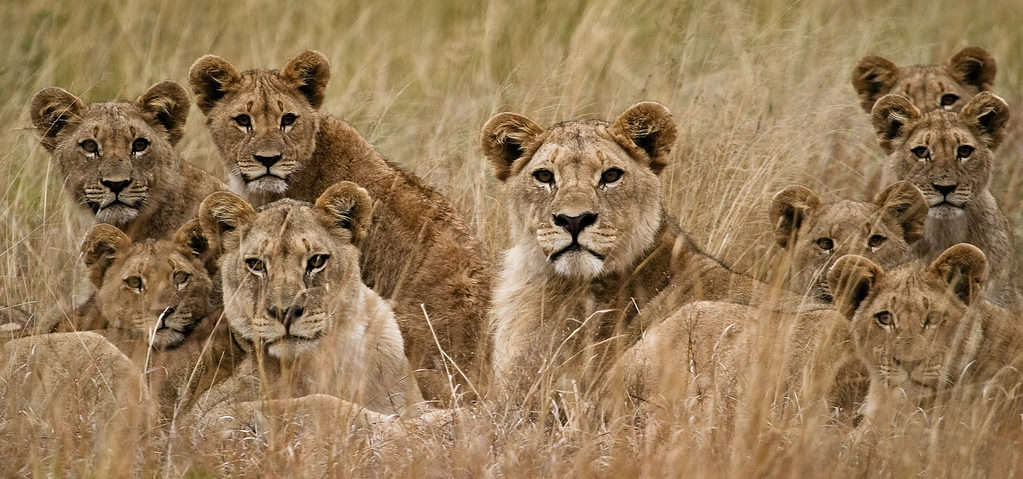
Lions are one of the few cats that are truly social creatures and live in groups.
©Riaan van den Berg/Shutterstock.com
Where Does This Video Take Place?
This amazing video was captured in Kruger National Park, which is located in northeastern South Africa. From Johannesburg, it’s about a 4-hour drive to the park.
Other Amazing Animal Videos You Make Like
A mother will do anything to protect her babies. In Zambia, a mother elephant battles a crocodile and dominates the fight. Watch as the giant mama stomps the crocodile numerous times and jabs it with her trunk. Satisfied but worn out with her kill, the proud mother takes a drink at the end.
Thank you for reading! Have some feedback for us? Contact the AZ Animals editorial team.



